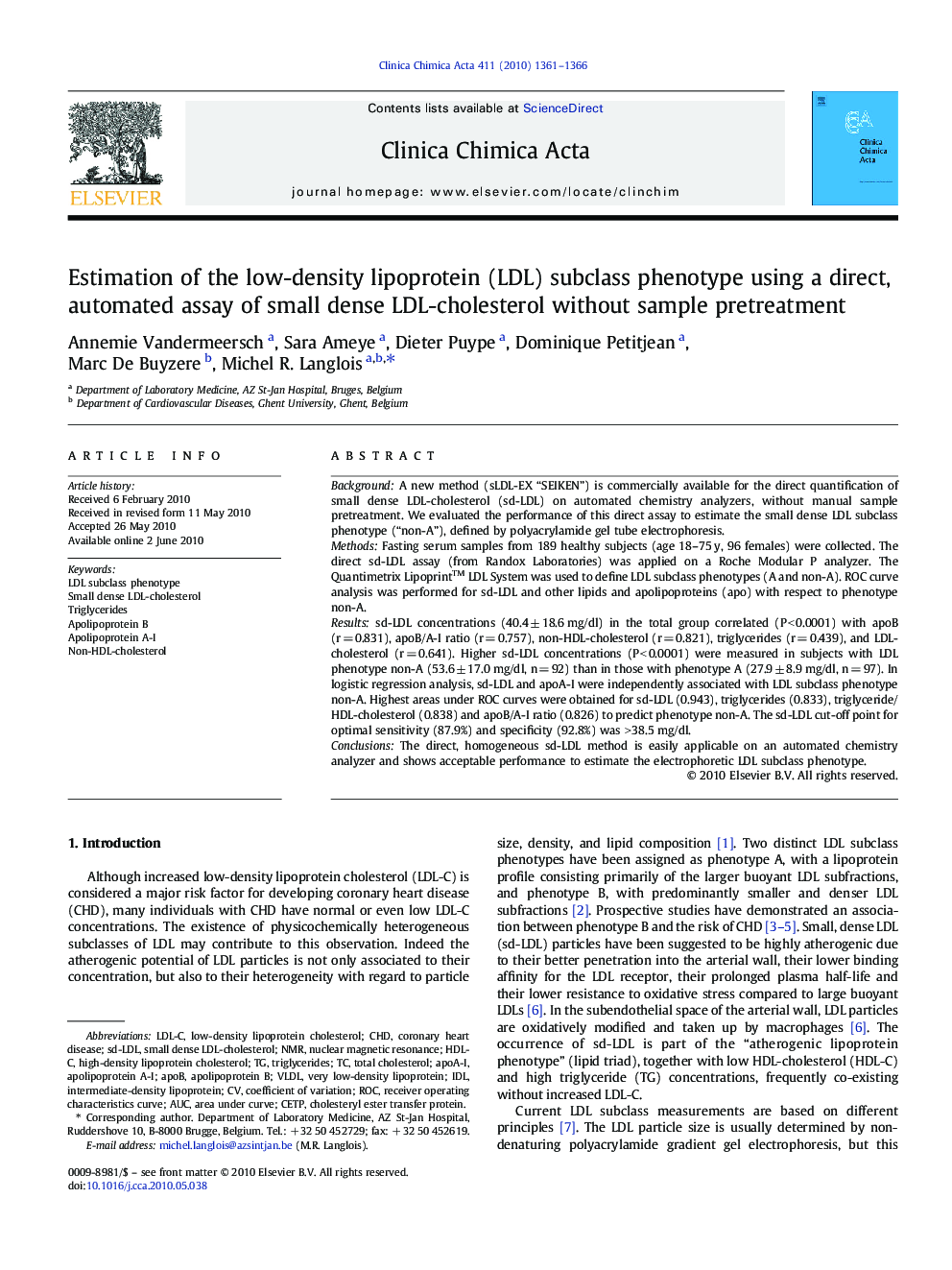| Article ID | Journal | Published Year | Pages | File Type |
|---|---|---|---|---|
| 1965748 | Clinica Chimica Acta | 2010 | 6 Pages |
BackgroundA new method (sLDL-EX “SEIKEN”) is commercially available for the direct quantification of small dense LDL-cholesterol (sd-LDL) on automated chemistry analyzers, without manual sample pretreatment. We evaluated the performance of this direct assay to estimate the small dense LDL subclass phenotype (“non-A”), defined by polyacrylamide gel tube electrophoresis.MethodsFasting serum samples from 189 healthy subjects (age 18–75 y, 96 females) were collected. The direct sd-LDL assay (from Randox Laboratories) was applied on a Roche Modular P analyzer. The Quantimetrix LipoprintTM LDL System was used to define LDL subclass phenotypes (A and non-A). ROC curve analysis was performed for sd-LDL and other lipids and apolipoproteins (apo) with respect to phenotype non-A.Resultssd-LDL concentrations (40.4 ± 18.6 mg/dl) in the total group correlated (P < 0.0001) with apoB (r = 0.831), apoB/A-I ratio (r = 0.757), non-HDL-cholesterol (r = 0.821), triglycerides (r = 0.439), and LDL-cholesterol (r = 0.641). Higher sd-LDL concentrations (P < 0.0001) were measured in subjects with LDL phenotype non-A (53.6 ± 17.0 mg/dl, n = 92) than in those with phenotype A (27.9 ± 8.9 mg/dl, n = 97). In logistic regression analysis, sd-LDL and apoA-I were independently associated with LDL subclass phenotype non-A. Highest areas under ROC curves were obtained for sd-LDL (0.943), triglycerides (0.833), triglyceride/HDL-cholesterol (0.838) and apoB/A-I ratio (0.826) to predict phenotype non-A. The sd-LDL cut-off point for optimal sensitivity (87.9%) and specificity (92.8%) was > 38.5 mg/dl.ConclusionsThe direct, homogeneous sd-LDL method is easily applicable on an automated chemistry analyzer and shows acceptable performance to estimate the electrophoretic LDL subclass phenotype.
